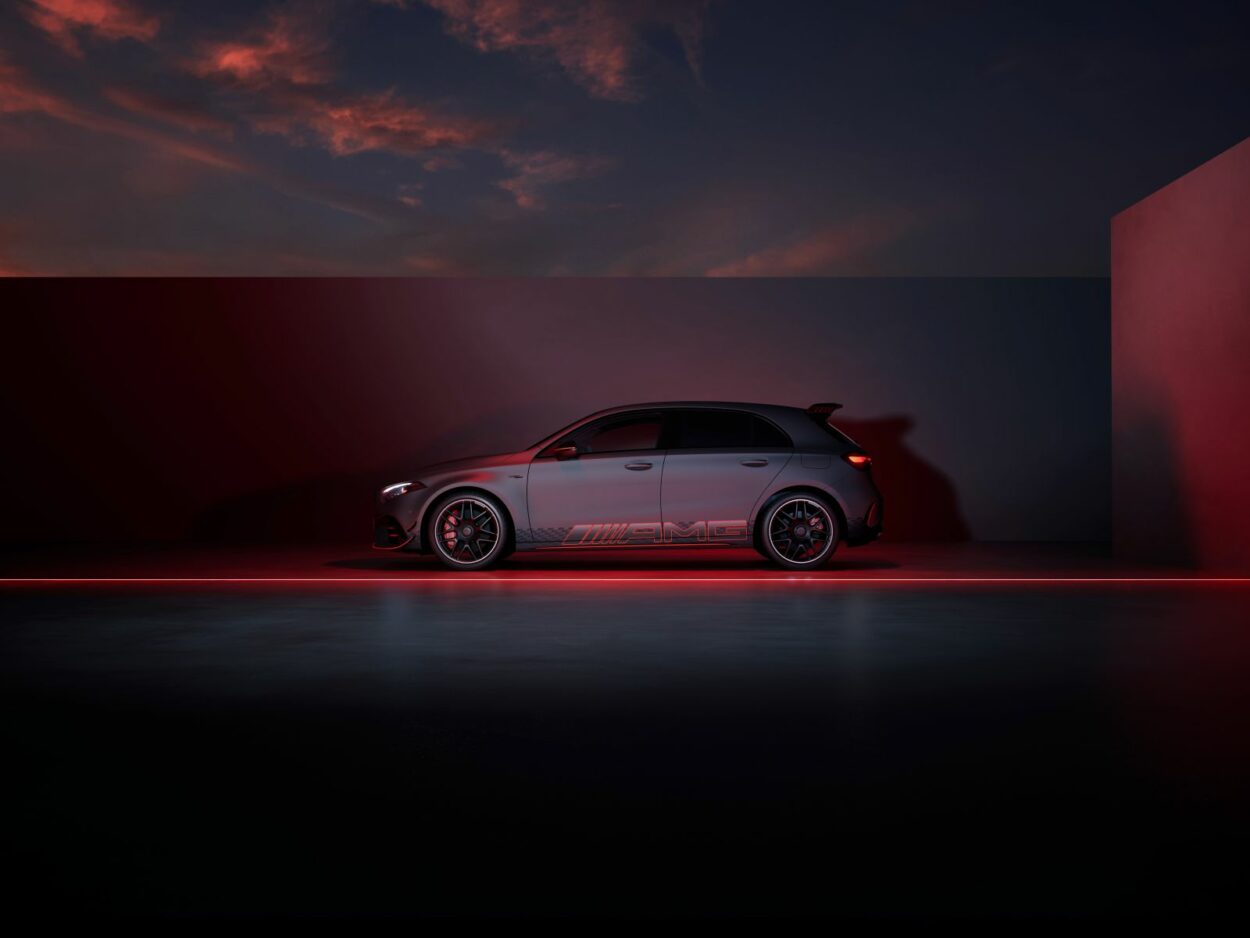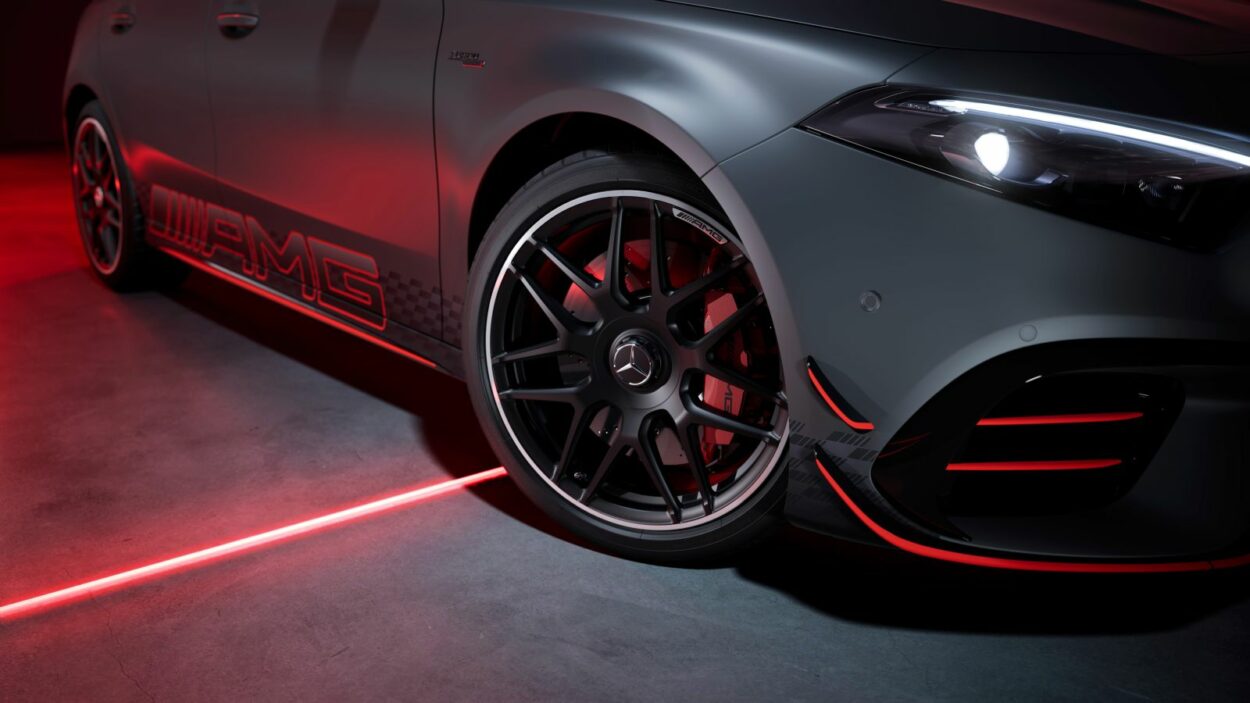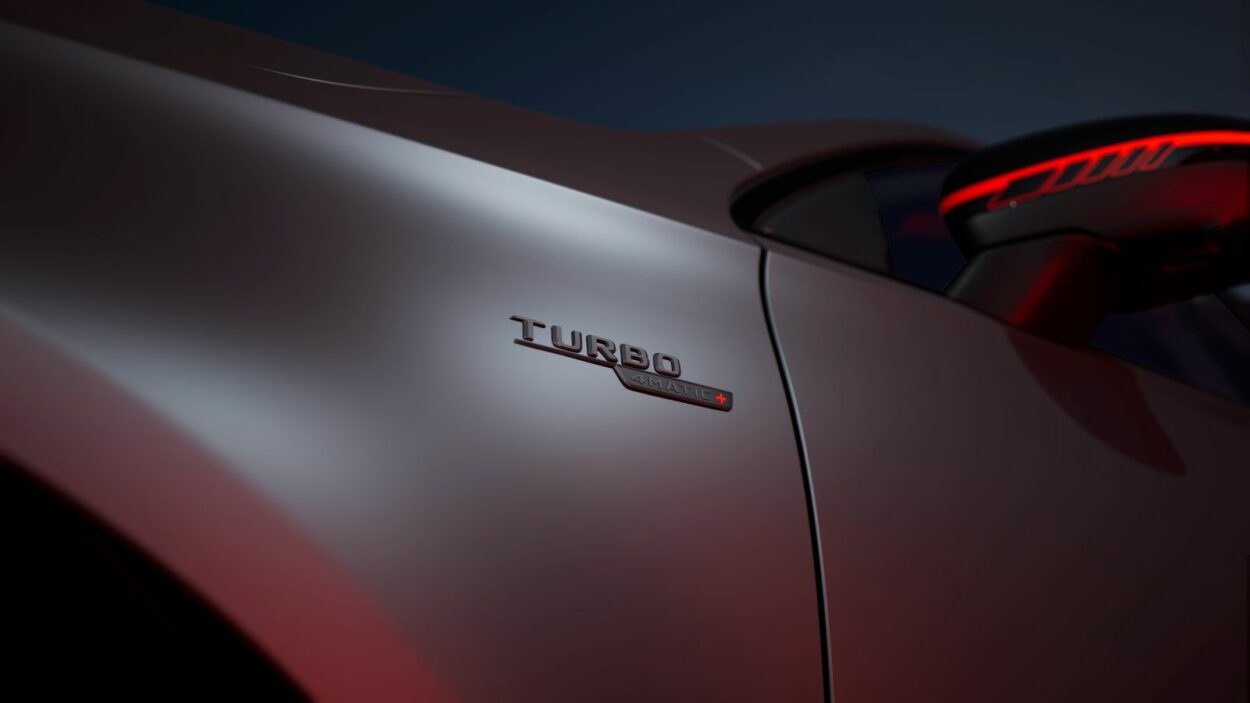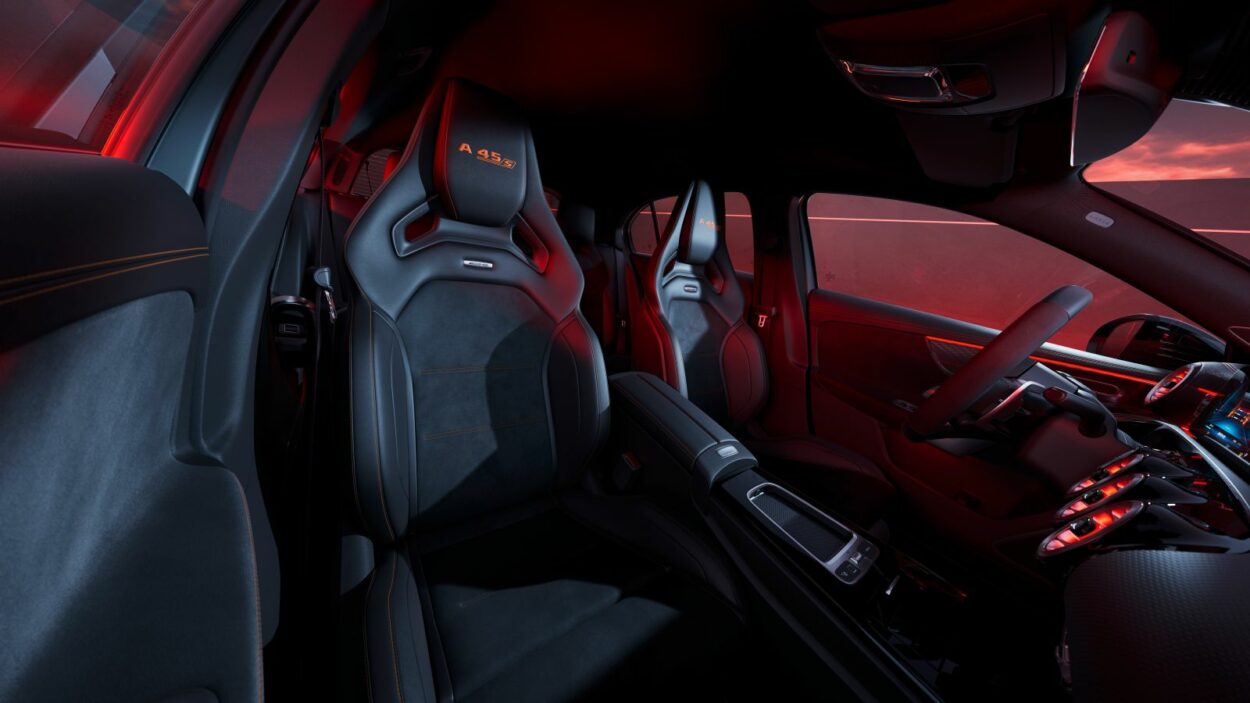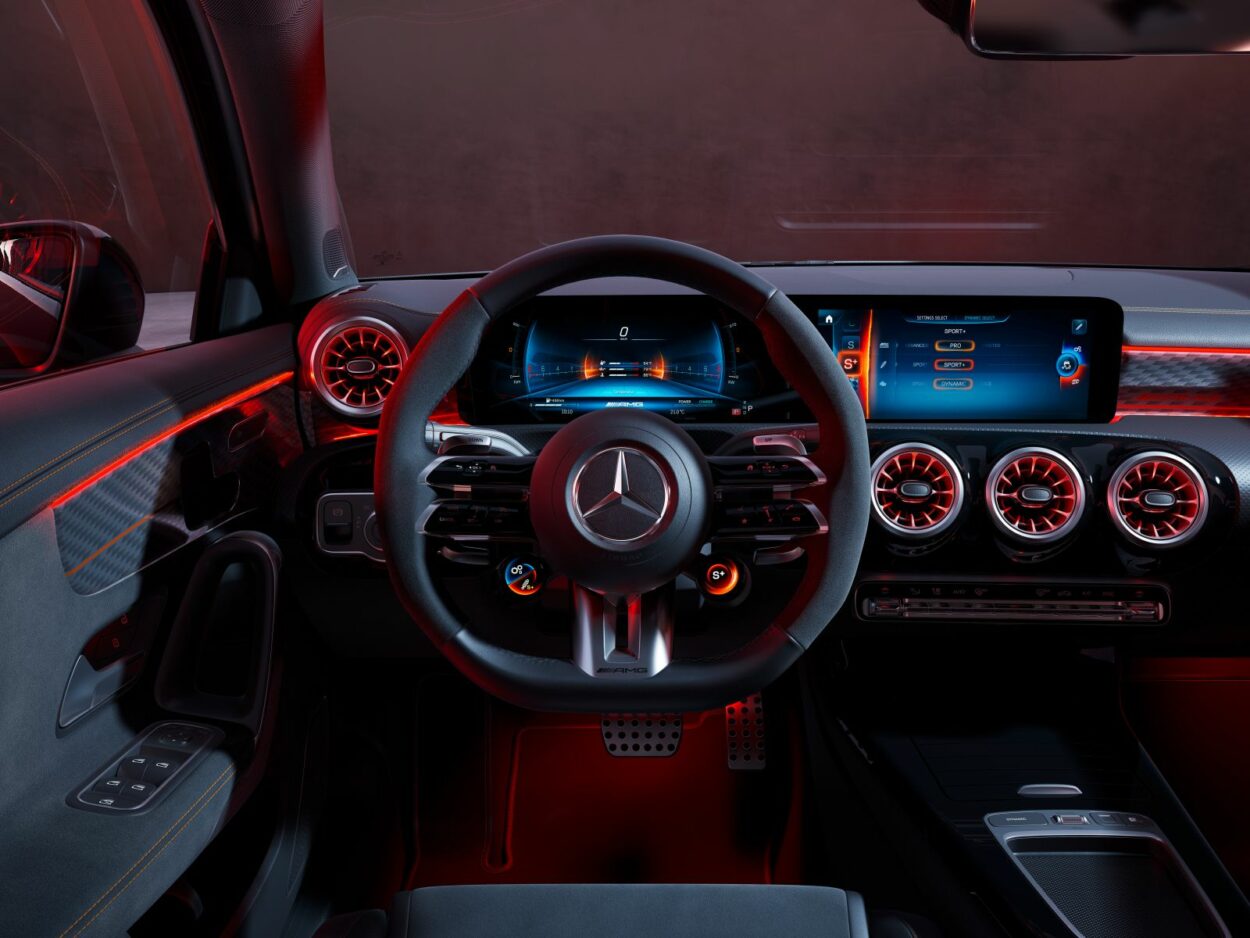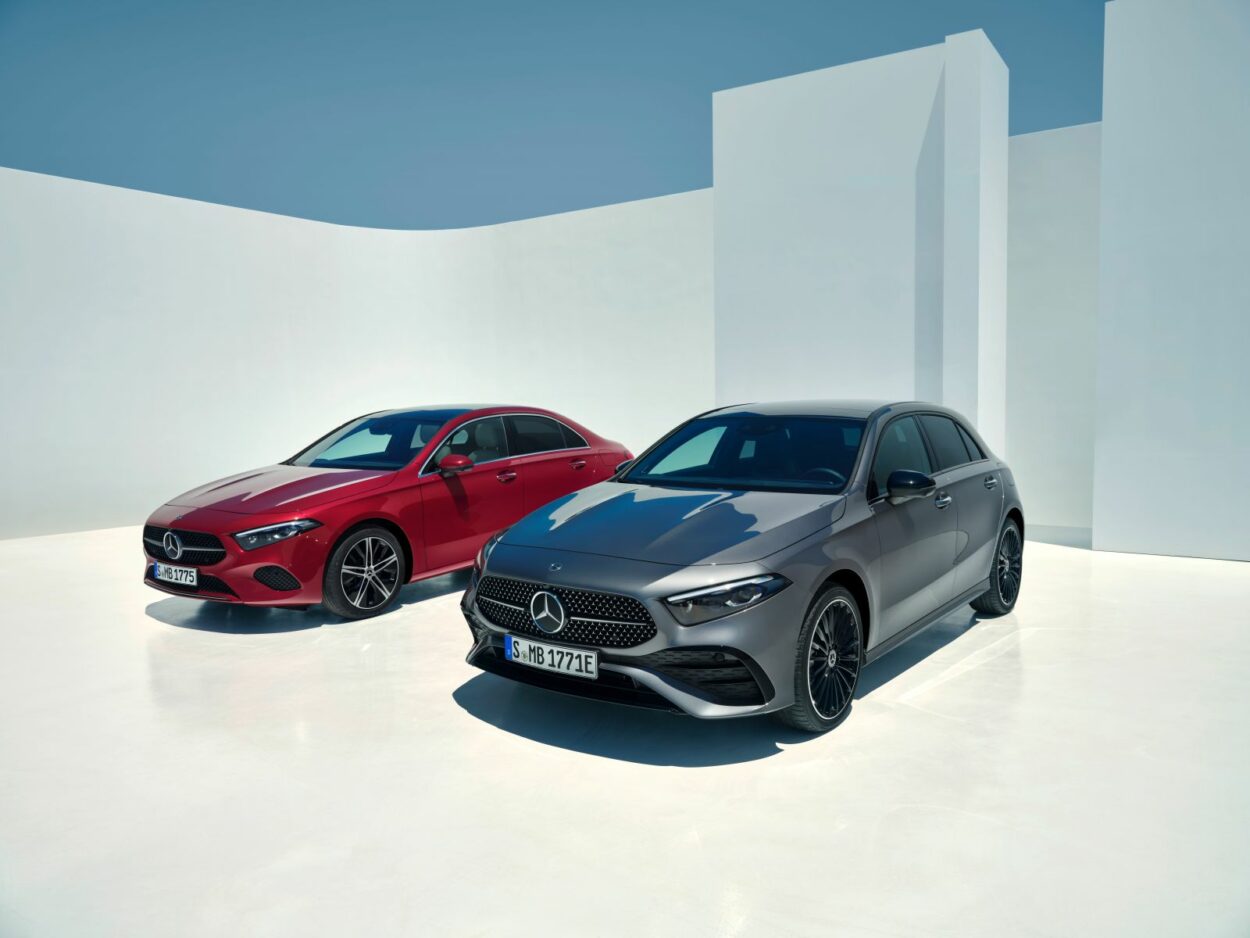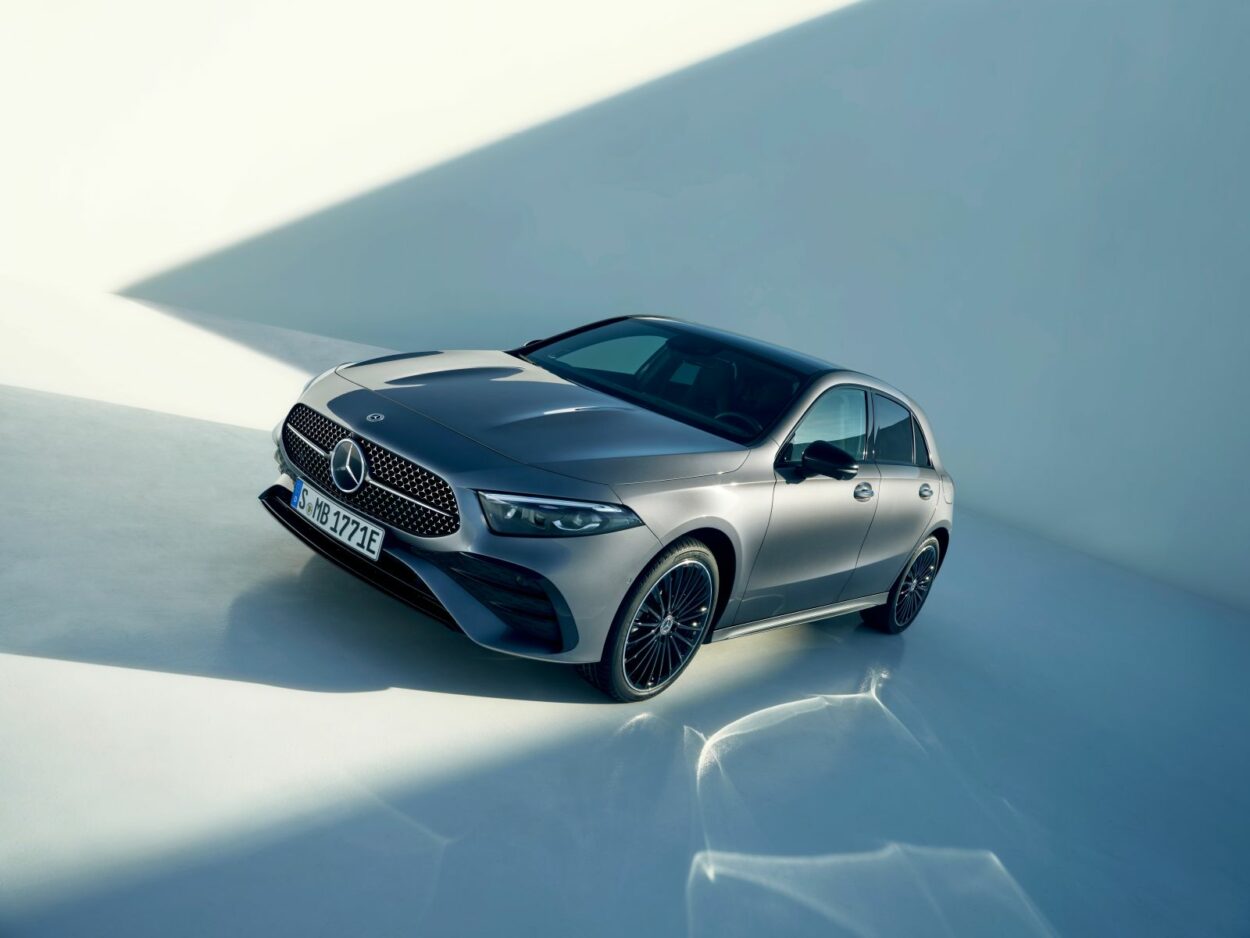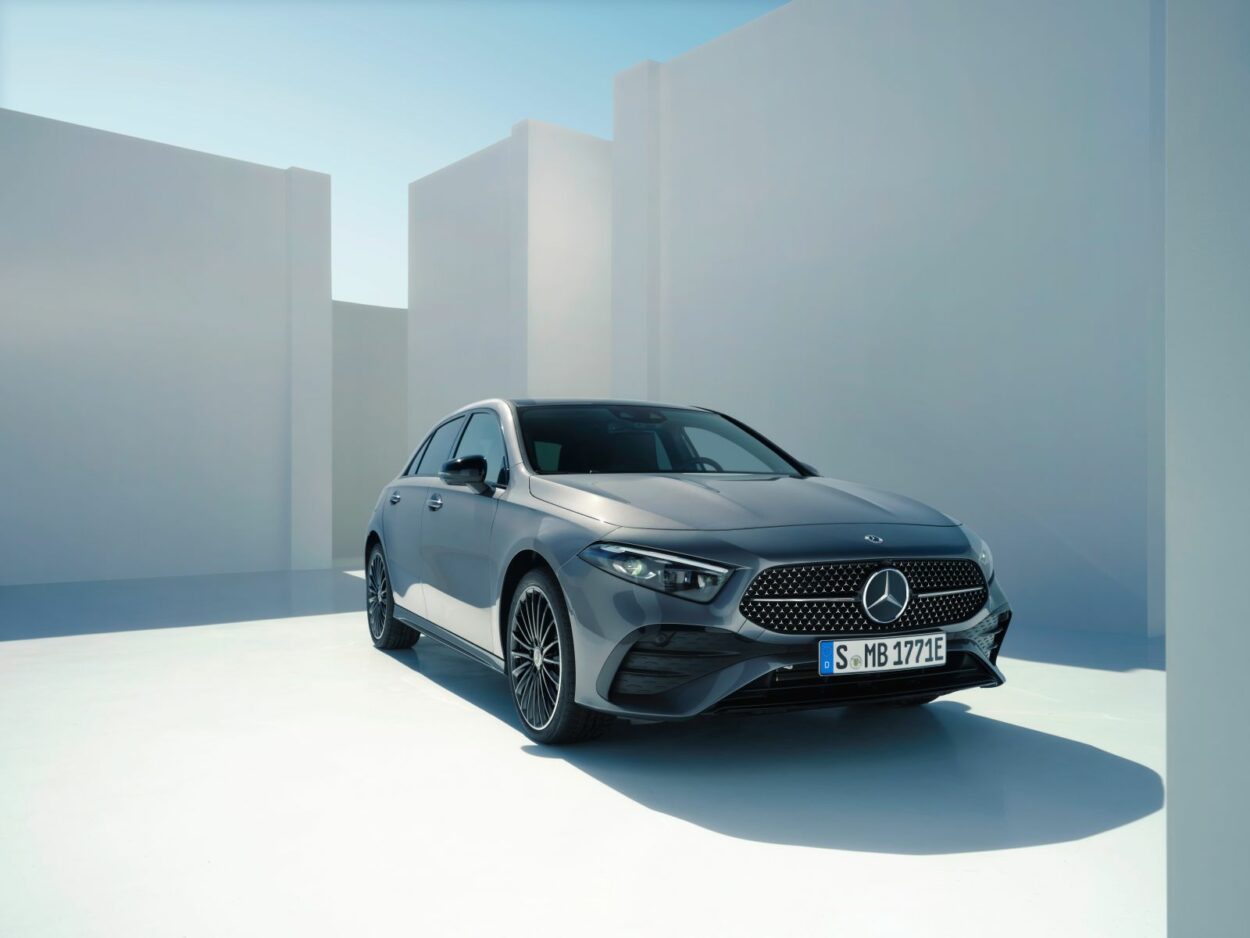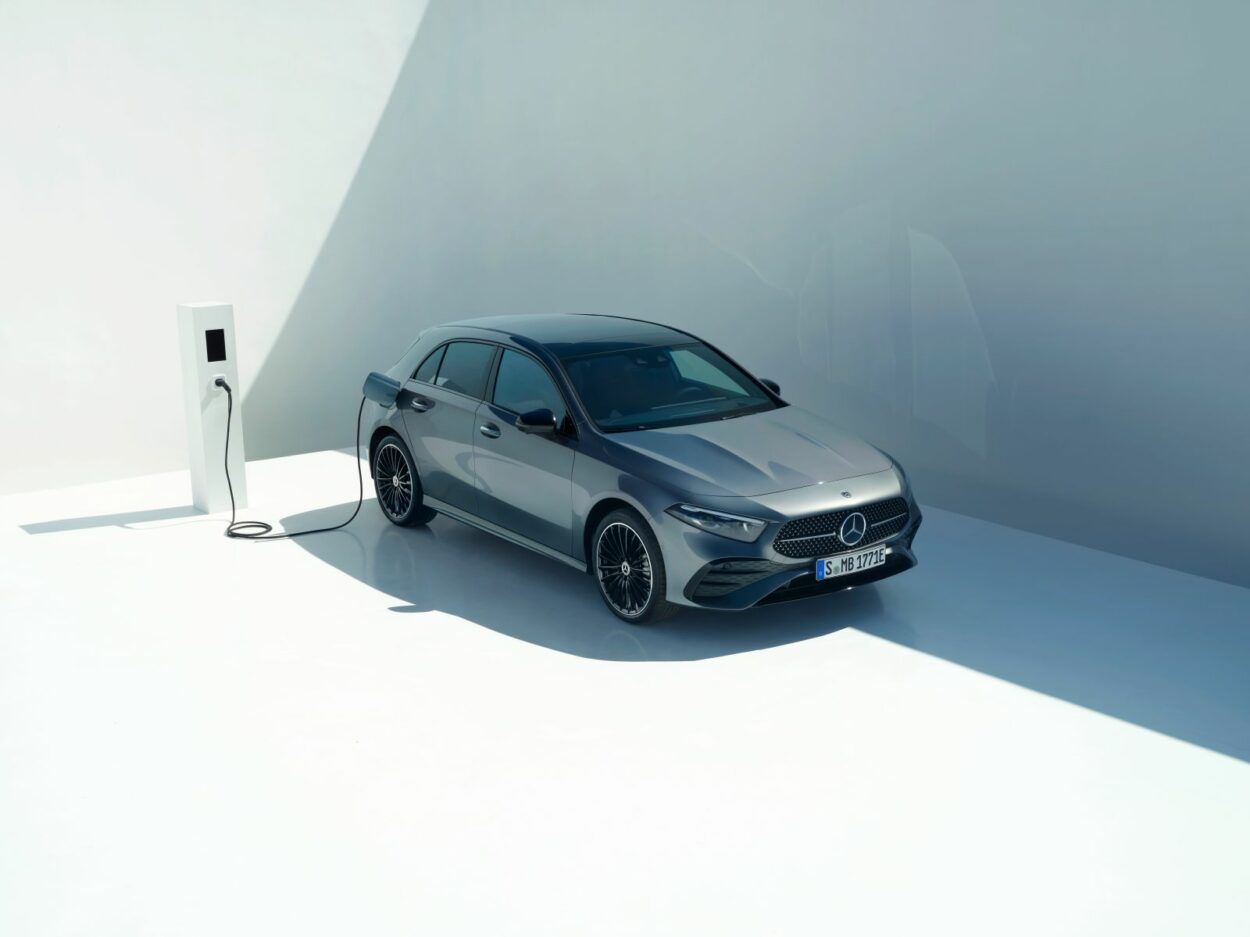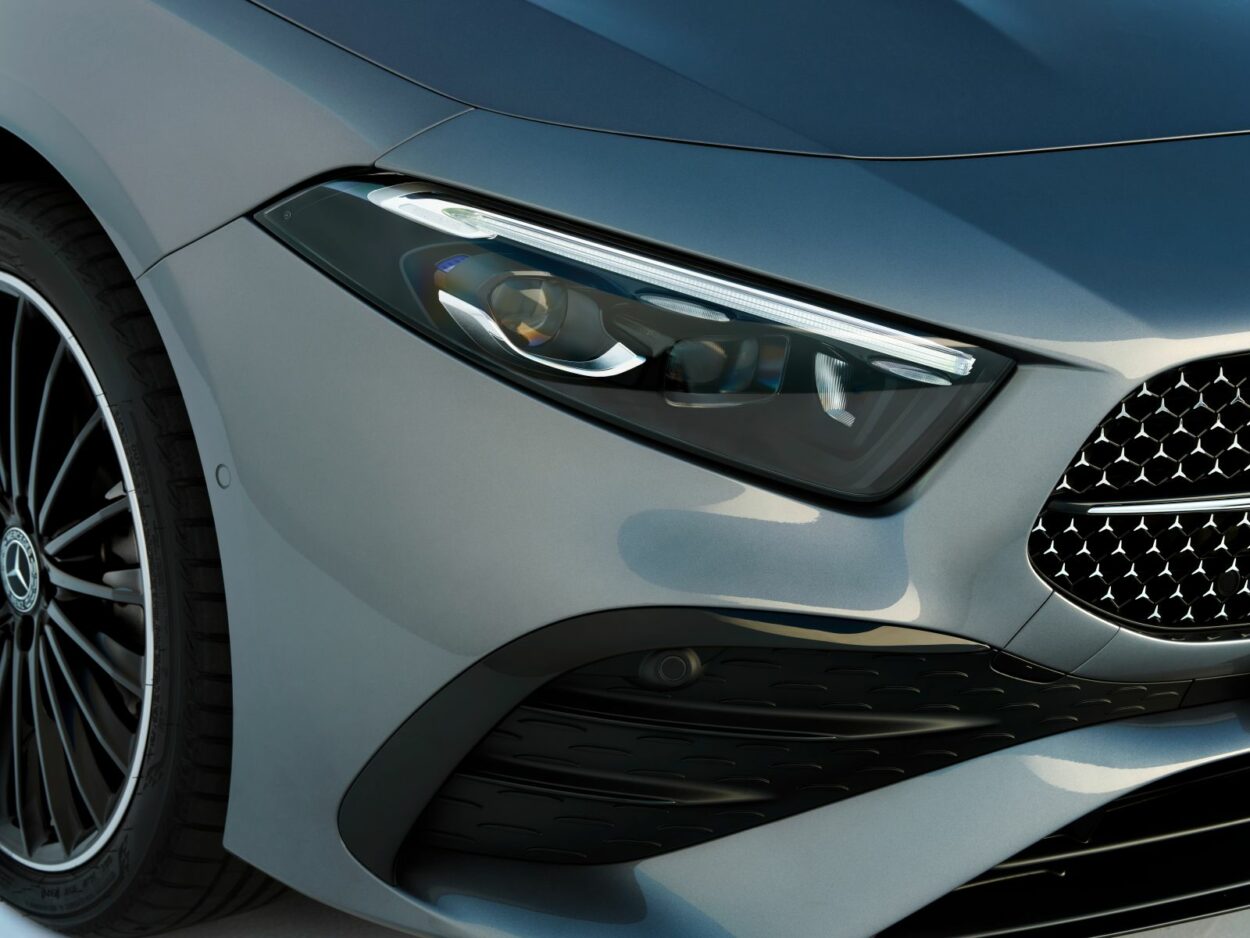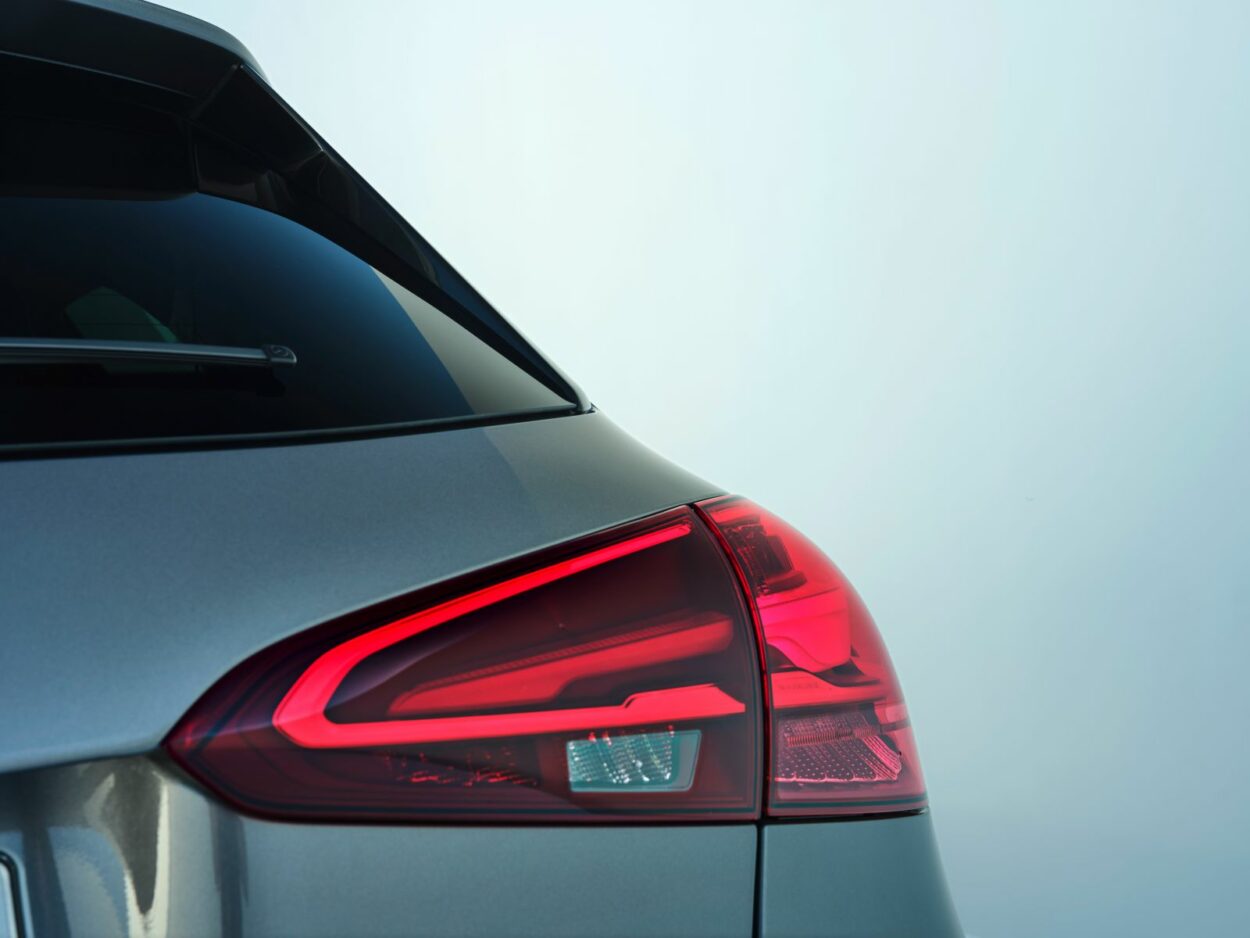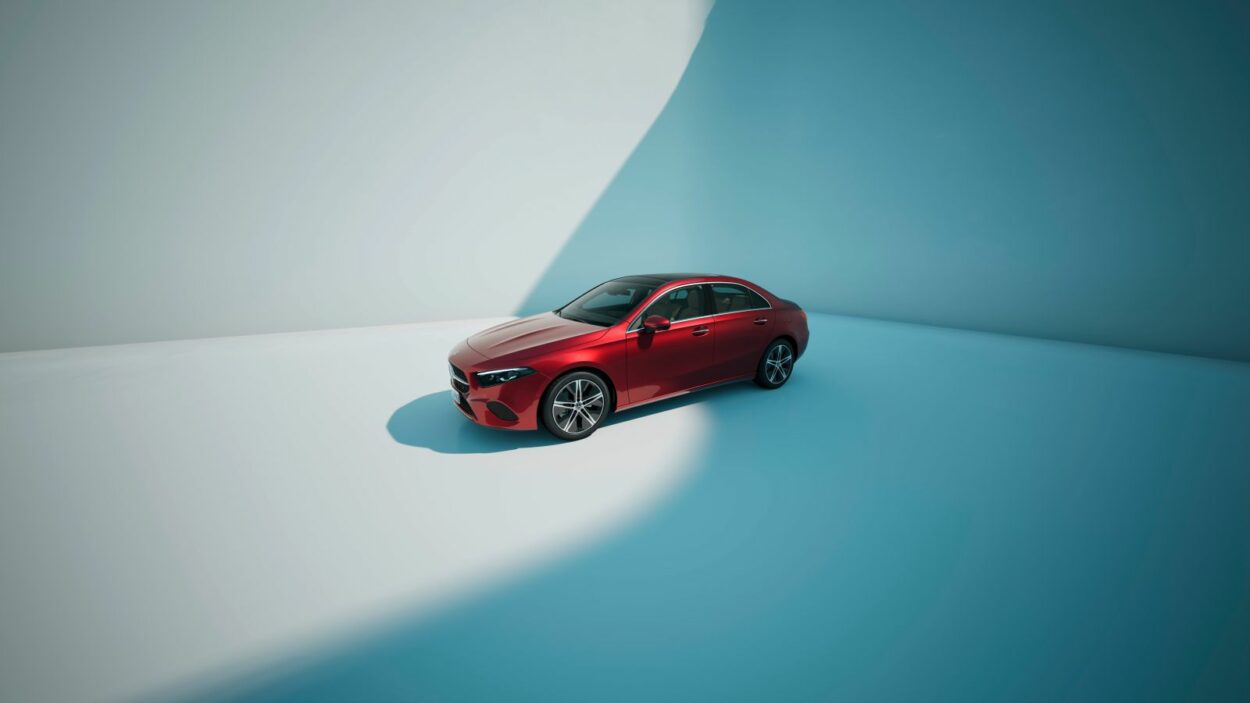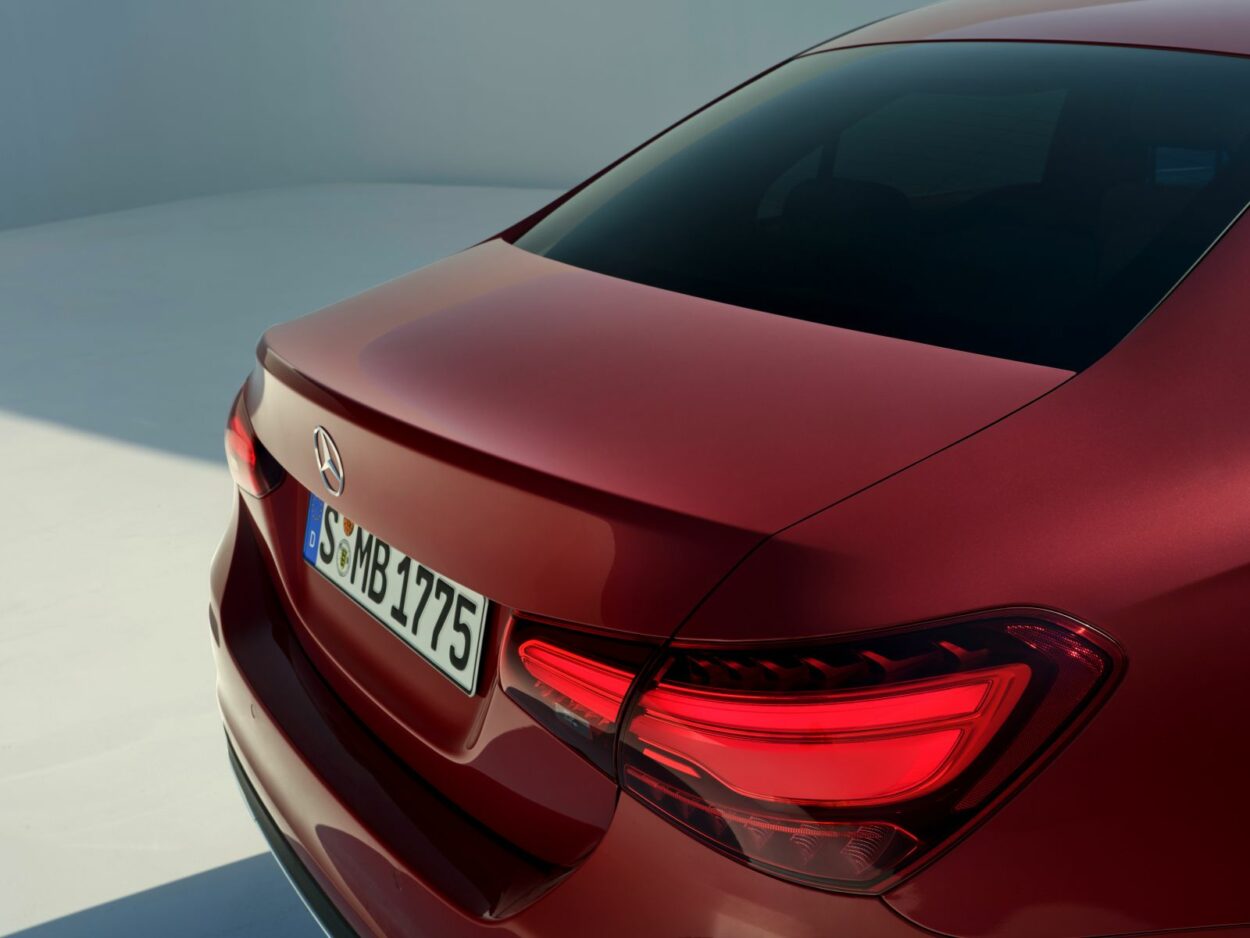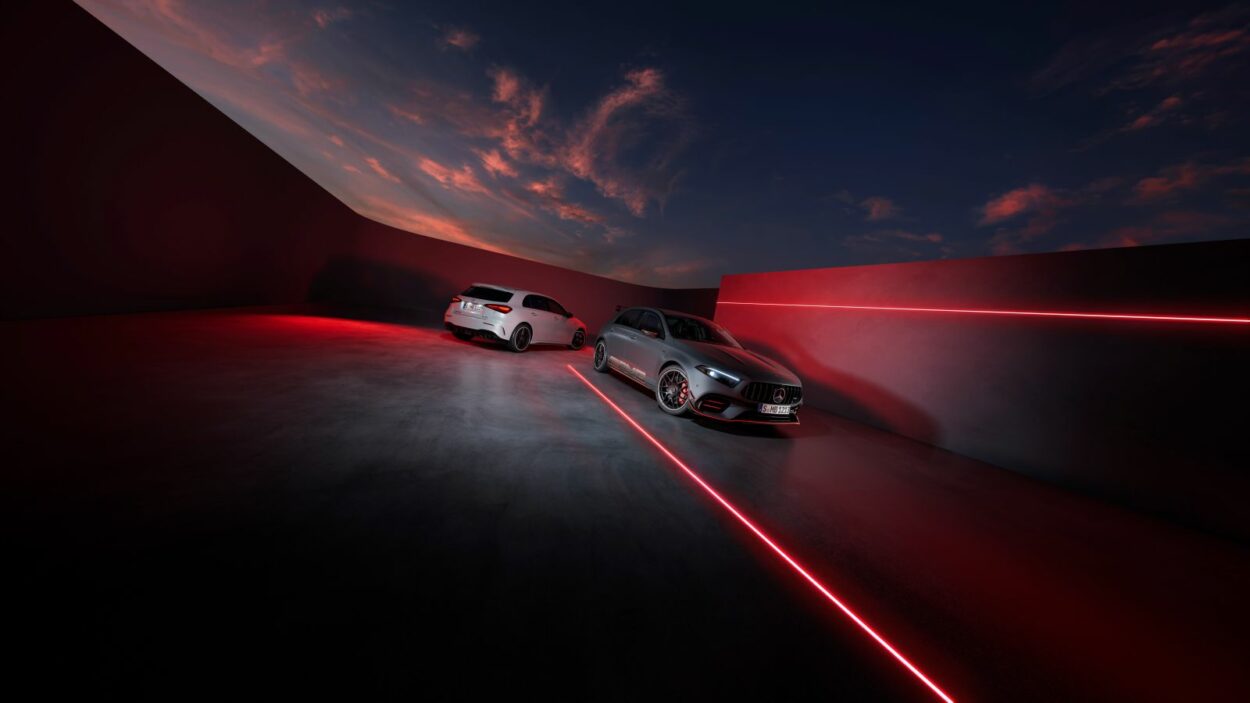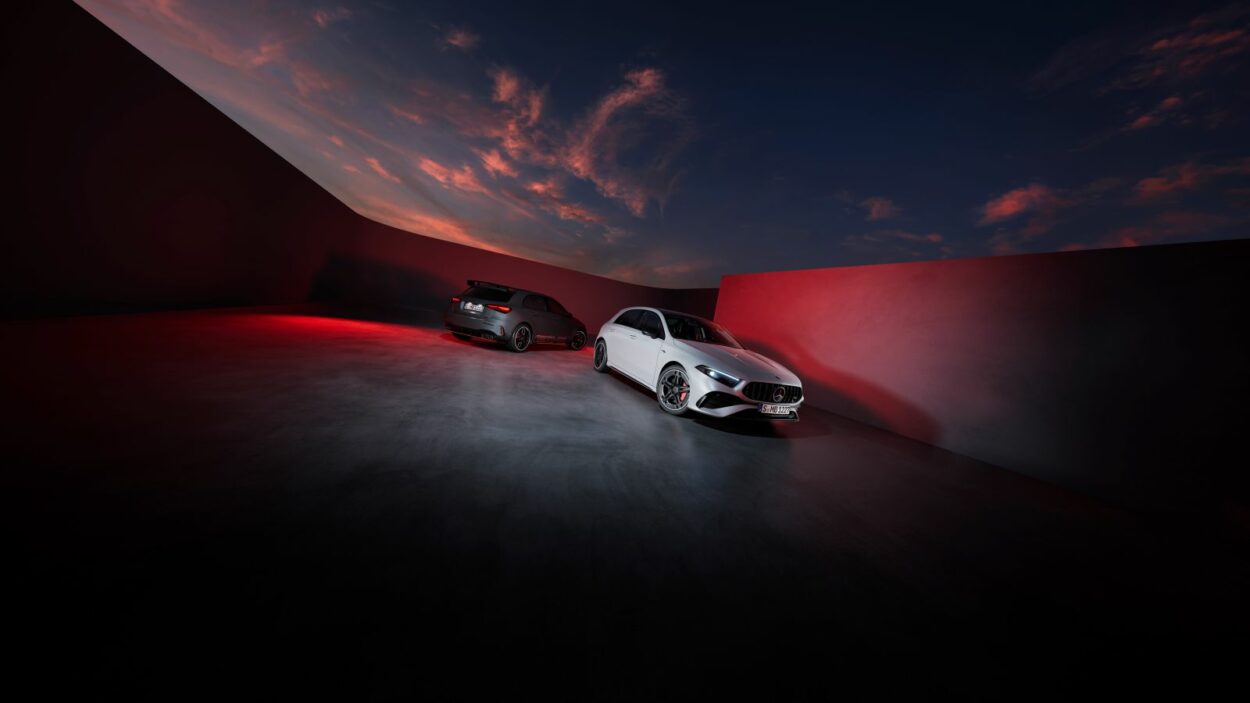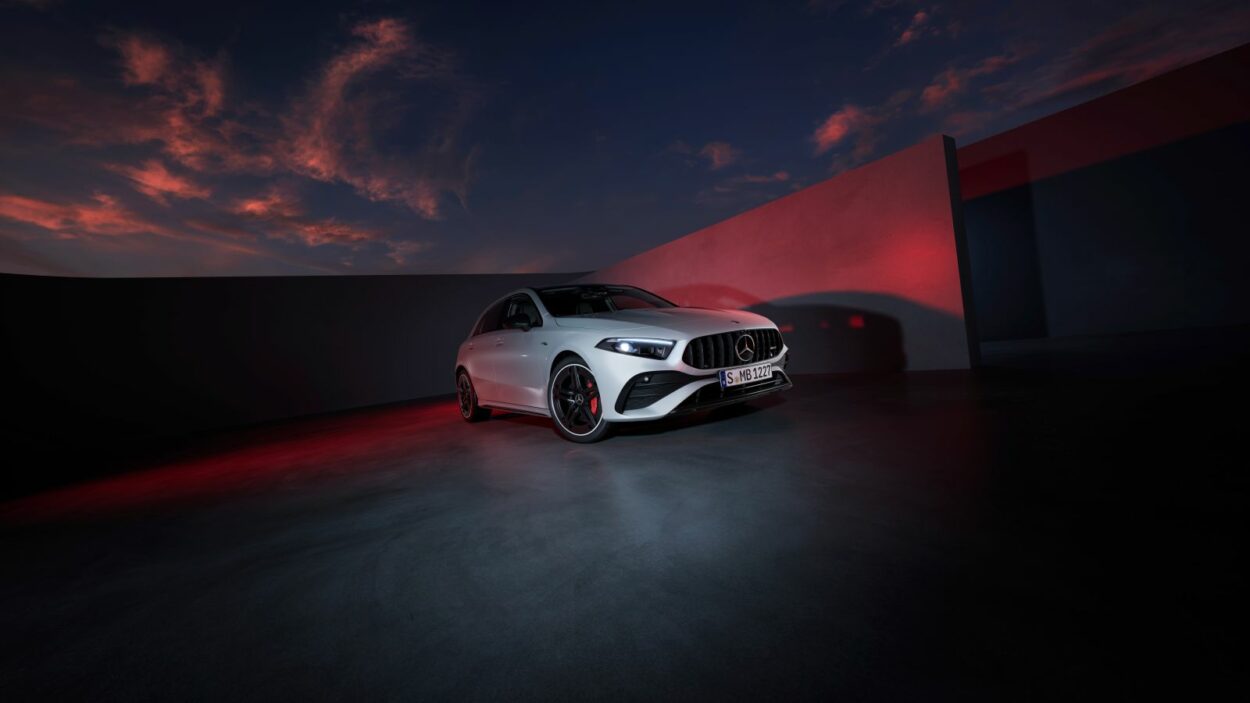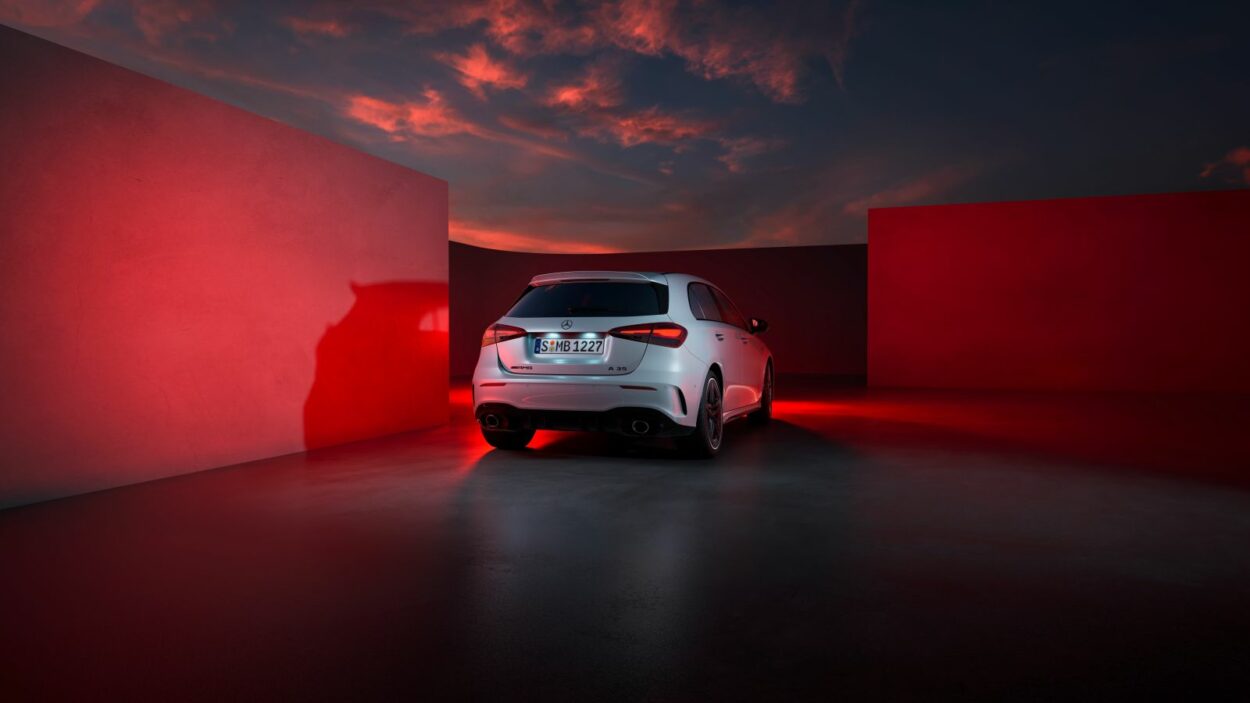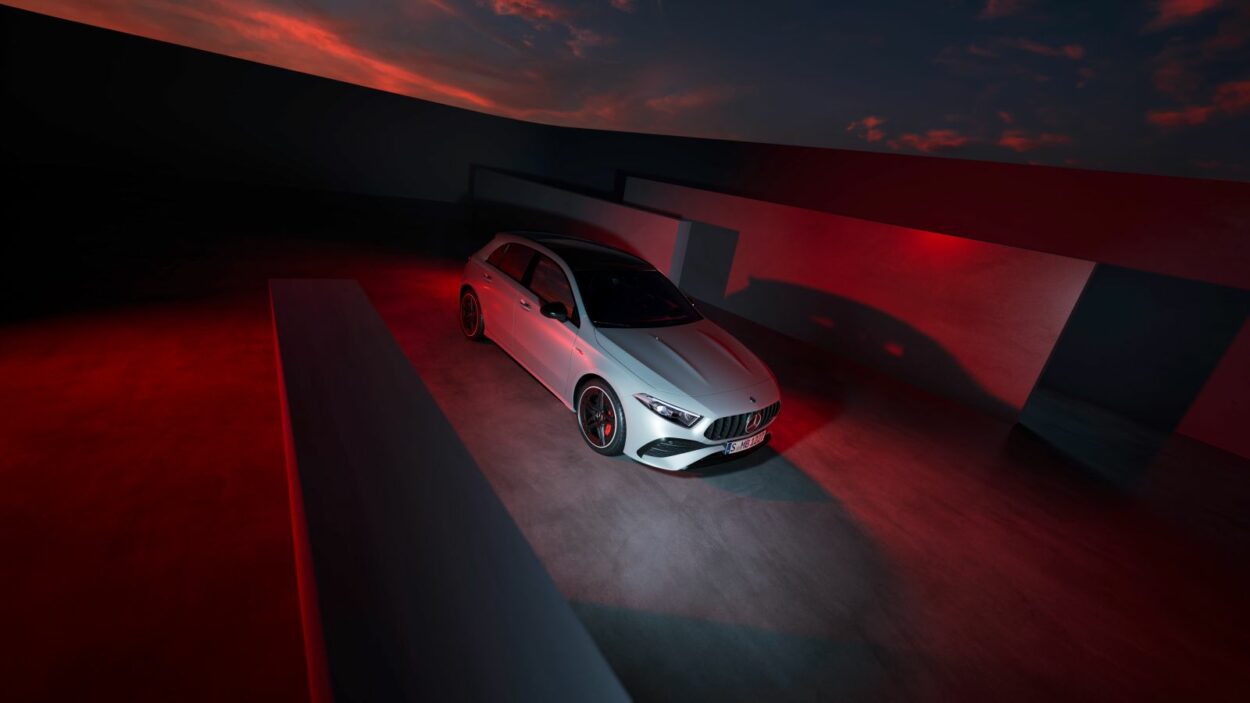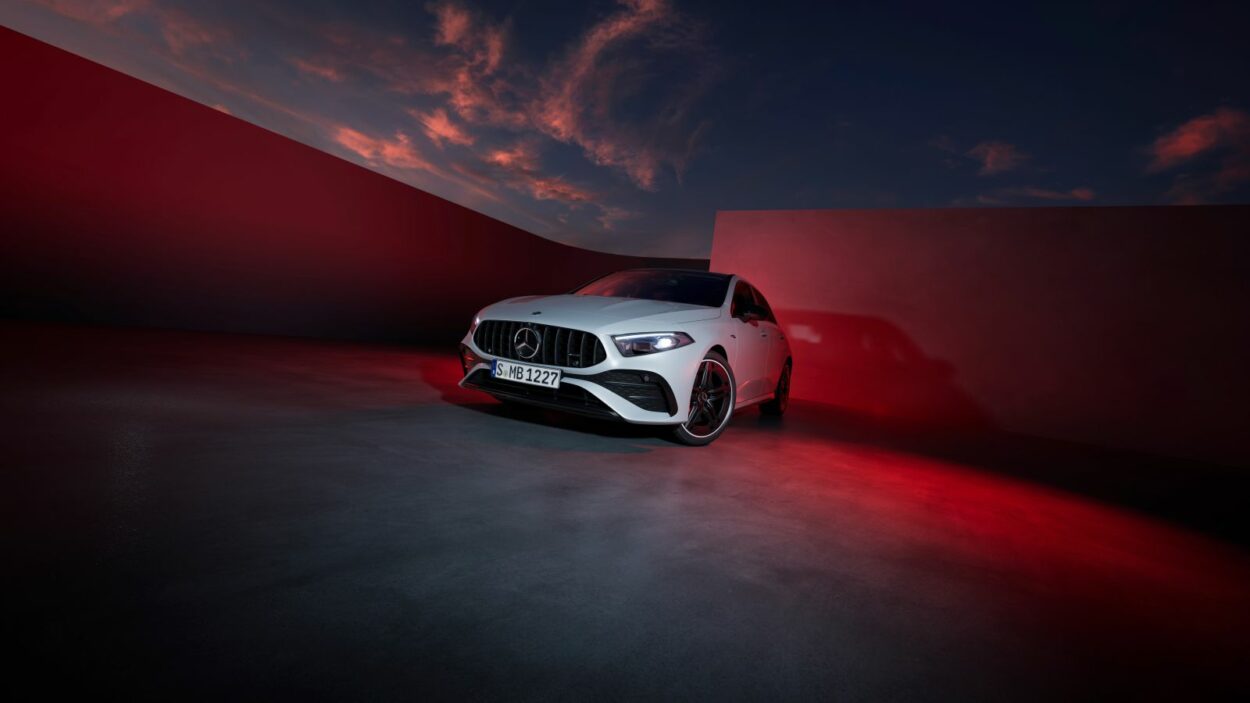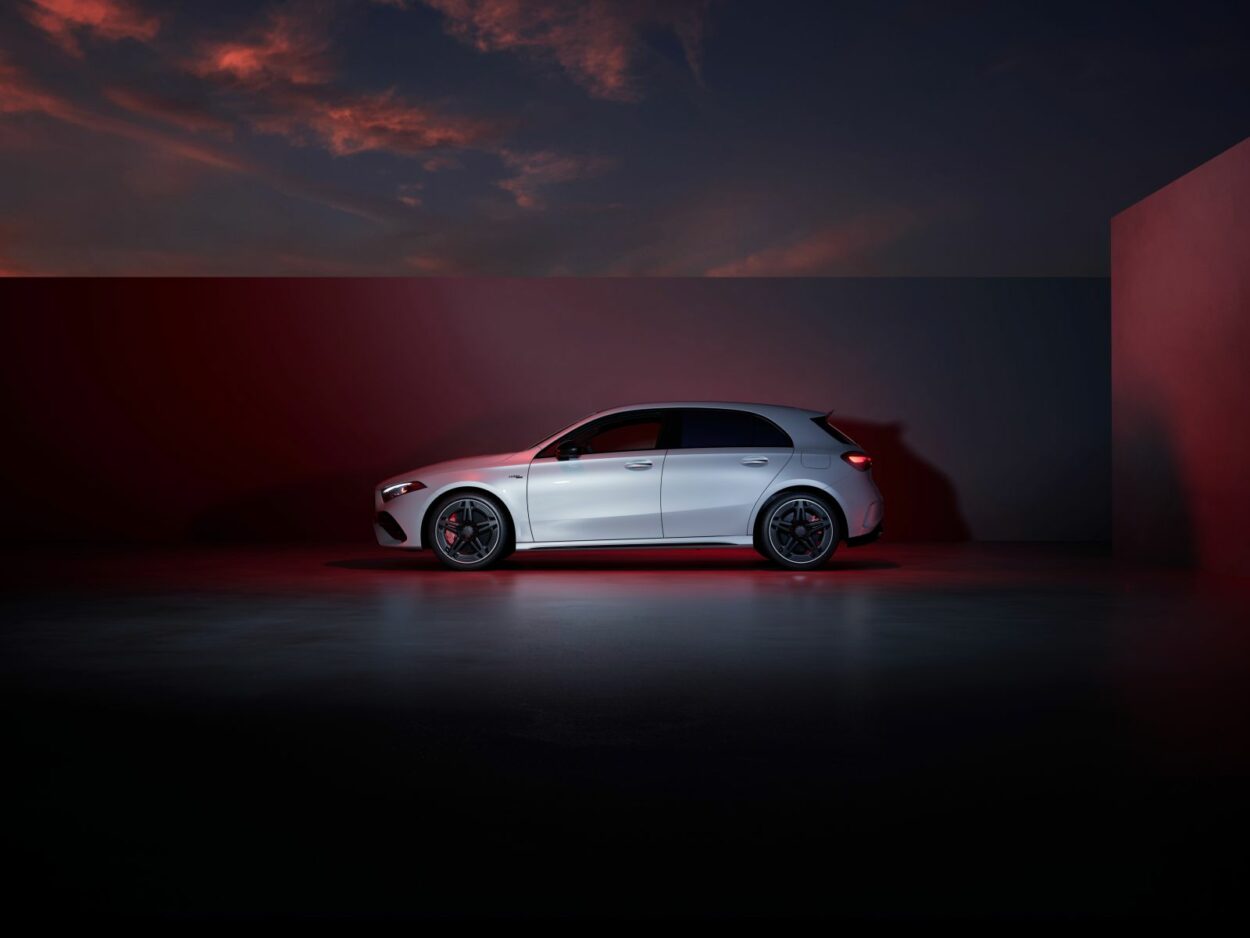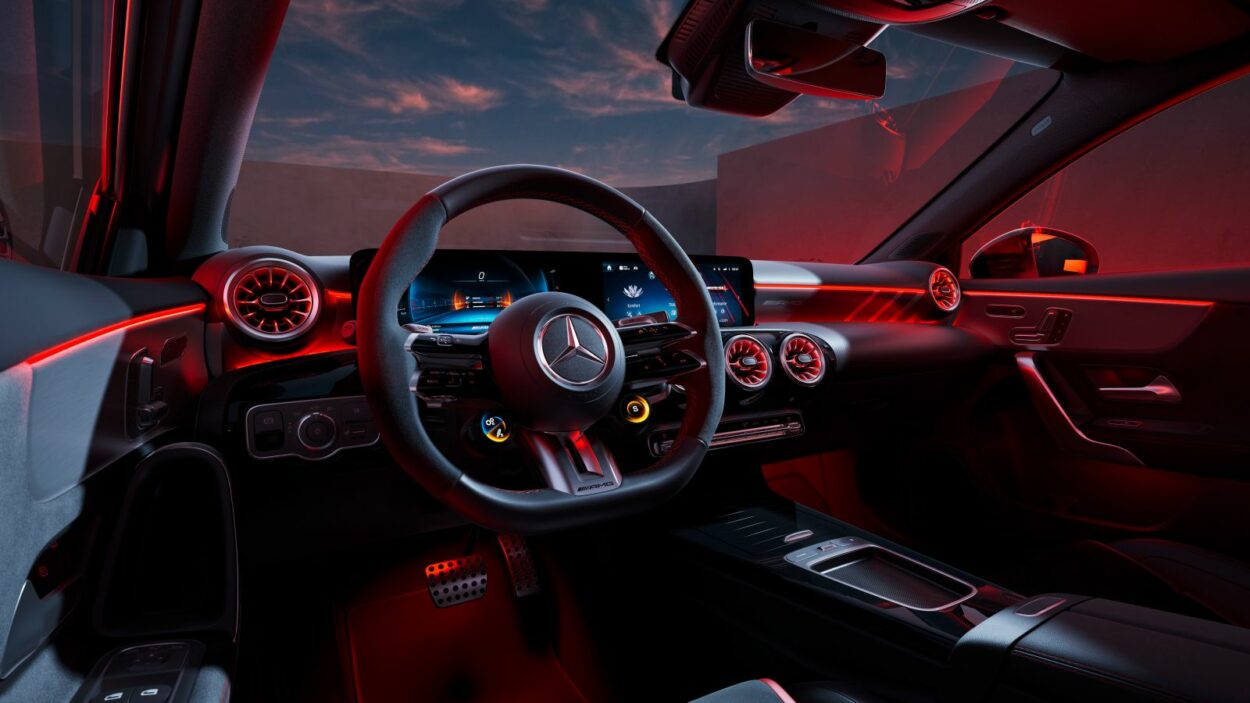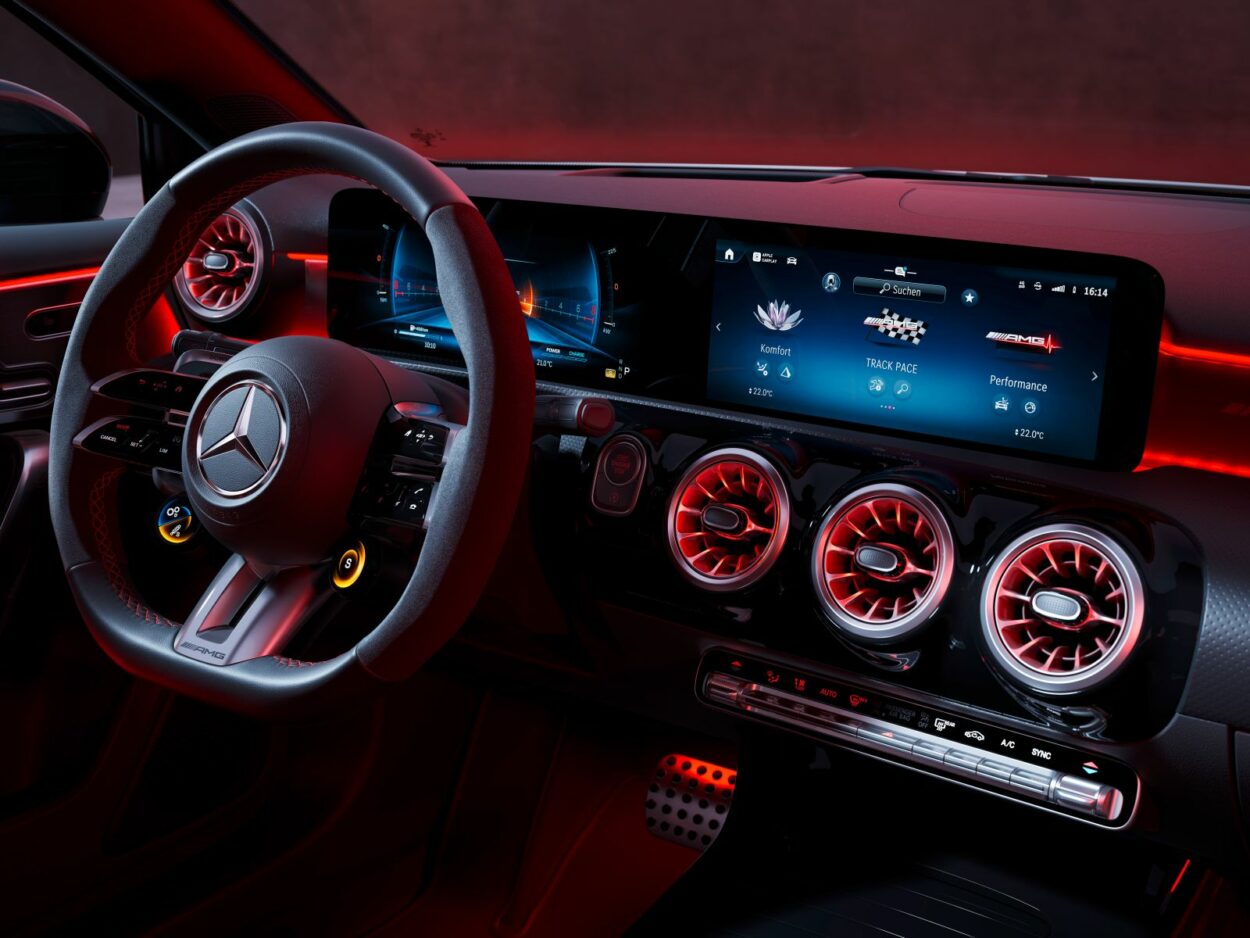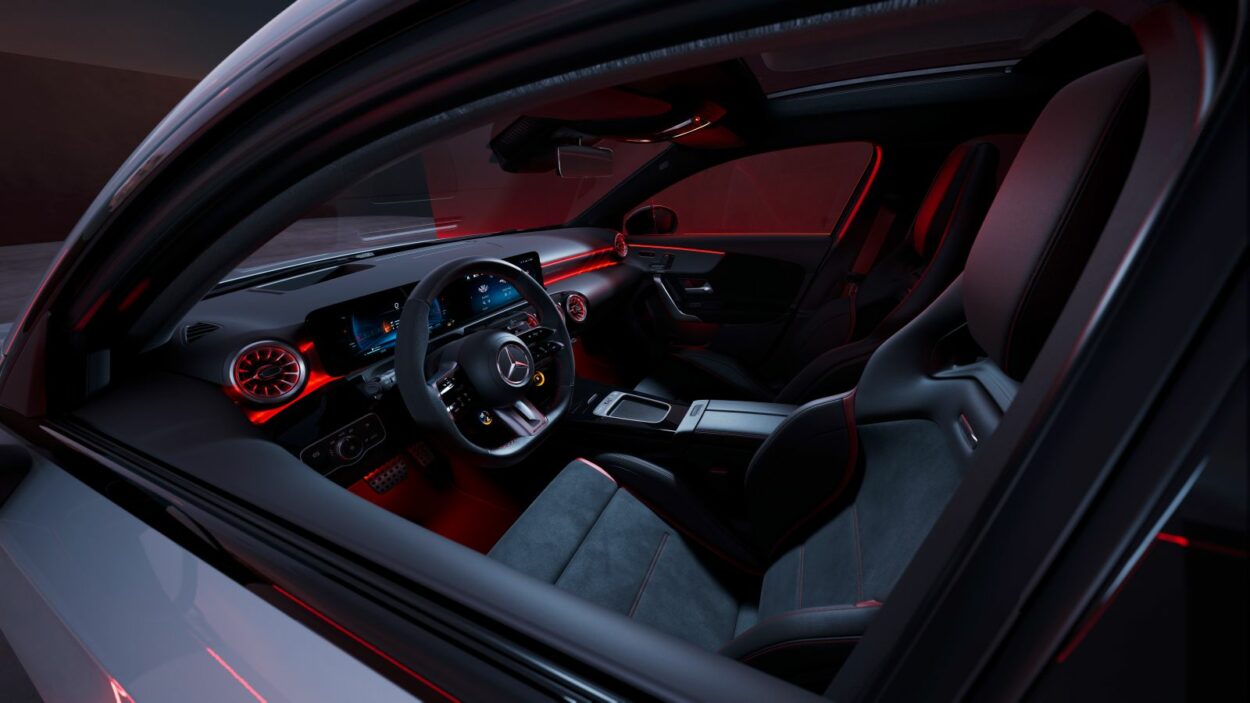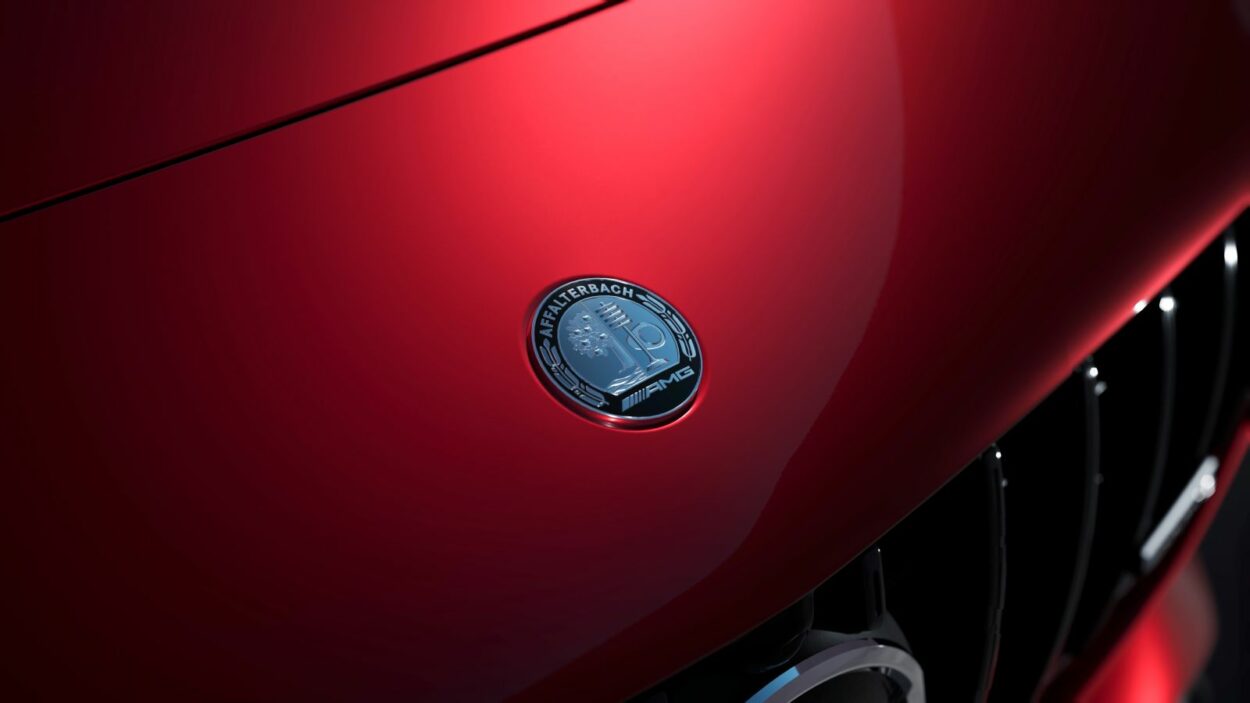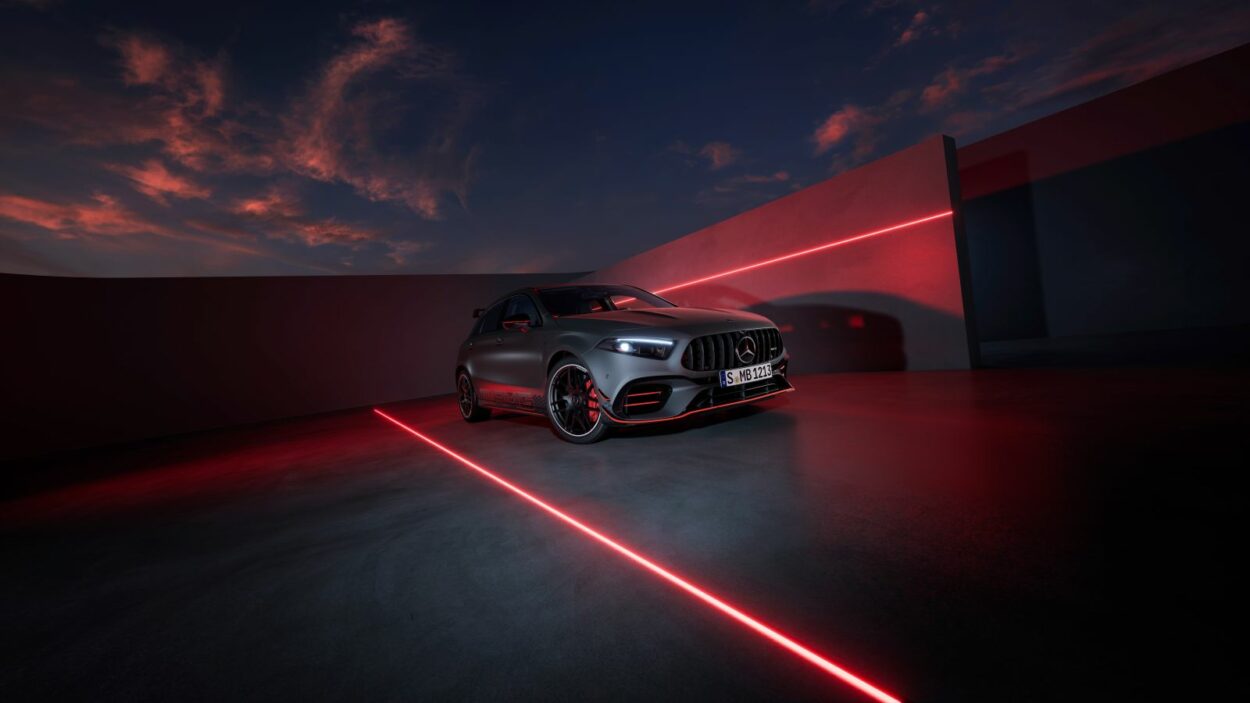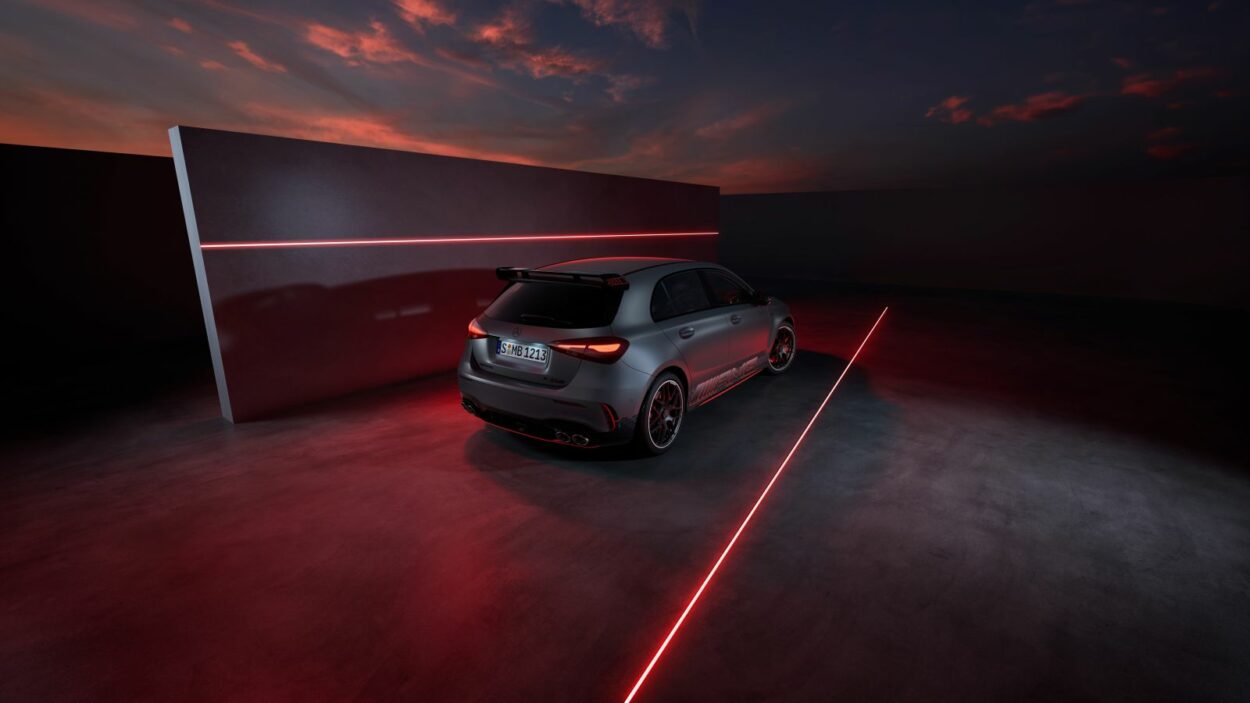La Classe A si rinnova aprendo le porte al lusso Mercedes

Mercedes-Benz A 250 e Hatchback: fuel consumption combined, weighted (WLTP) 1,1-0,8 l/100 km, electric energy consumption combined, weighted (WLTP) 17.0-15.0 kWh/100km, CO2 emissions combined, weighted (WLTP) 25-18 g/km [2]; exterior: mountain grey, AMG line[2] The stated figures are the measured "WLTP CO₂ figures" in accordance with Art. 2 No. 3 of Implementing Regulation (EU) 2017/1153. The fuel consumption figures were calculated on the basis of these figures. Electric energy consumption was determined on the basis of Commission Regulation (EU) 2017/1151. / Mercedes-Benz A-Class saloon; exterior: patagonia red MANUFAKTUR; progressive line Mercedes-Benz A 250 e Hatchback: fuel consumption combined, weighted (WLTP) 1,1-0,8 l/100 km, electric energy consumption combined, weighted (WLTP) 17.0-15.0 kWh/100km, CO2 emissions combined, weighted (WLTP) 25-18 g/km [2]; exterior: mountain grey, AMG line[2] The stated figures are the measured "WLTP CO₂ figures" in accordance with Art. 2 No. 3 of Implementing Regulation (EU) 2017/1153. The fuel consumption figures were calculated on the basis of these figures. Electric energy consumption was determined on the basis of Commission Regulation (EU) 2017/1151. / Mercedes-Benz A-Class saloon; exterior: patagonia red MANUFAKTUR; progressive line
Più che di entry level, Mercedes per la sua Classe A preferisce parlare di entry luxury. La più piccola tra le vetture a marchio Mercedes si rinnova sia in versione hatchback che berlina, con un sistema MBUX di ultima generazione e una gamma di modelli orientata ai desideri dei clienti.
Trova le modifiche
Le modifiche esterne sono minime. Tra queste ci sono una griglia rinnovata con un motivo a stella, nuovi fari con la possibilità di scegliere una variante a LED, quattro nuovi design per i cerchi, luci posteriori a LED di serie e un nuovo diffusore posteriore.
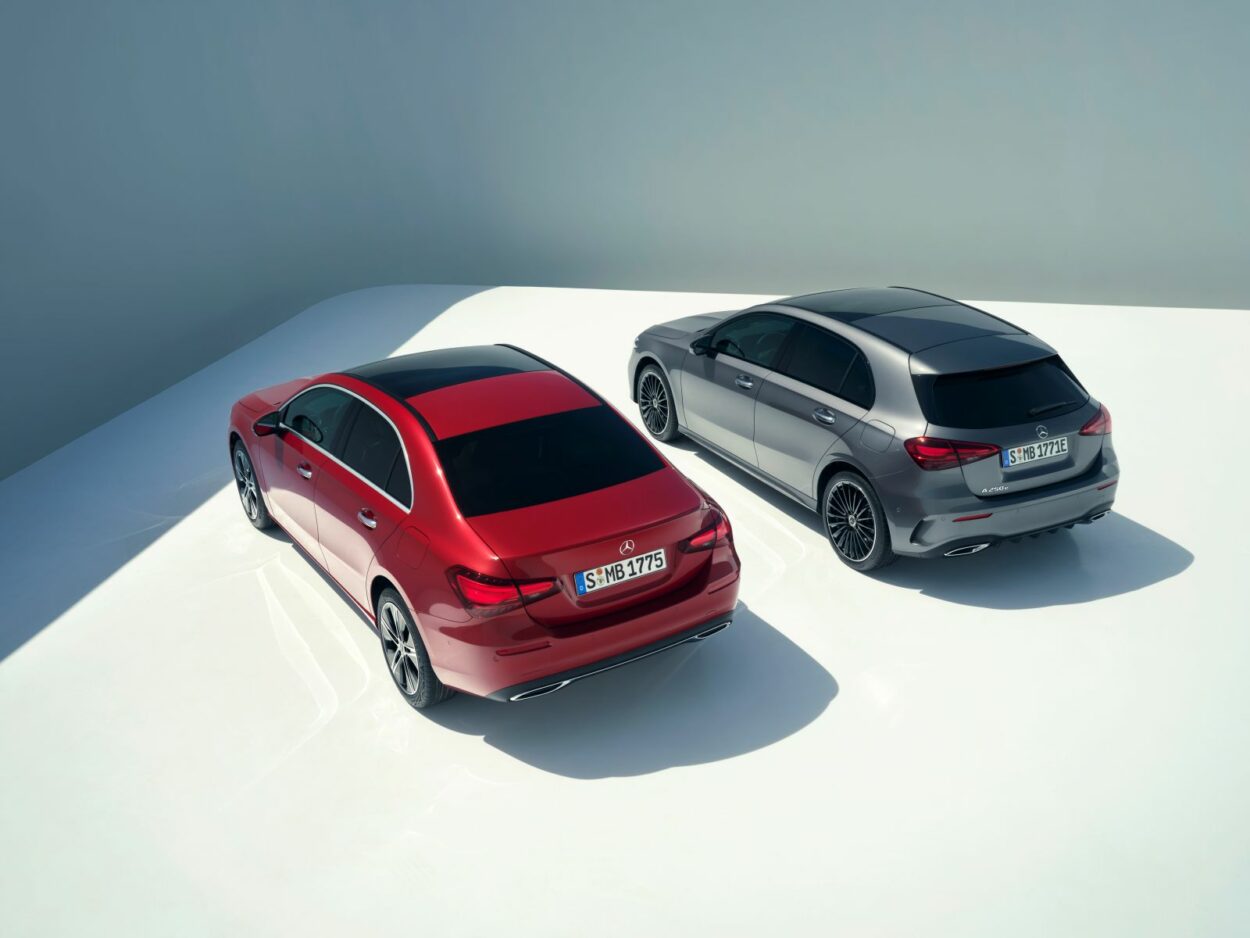
Anche all’interno dell’abitacolo non c’è stata una rivoluzione. Di serie troviamo il quadro strumenti da 7” affiancato al display per l’infotainment da 10,25”, ma come optional è disponibile anche il quadro strumenti da 10,25”. C’è anche un nuovo volante appiattito nella parte bassa, una consolle centrale senza controller rotativo per il sistema MBUX e prese d’aria ispirate alle turbine di un jet.
Allestimenti rinnovati
Mercedes ha apportato delle modifiche agli allestimenti. Per esempio, le versioni d’ingresso sono dotate di nuovi rivestimenti in Artico, mentre l’abitacolo dell’allestimento Progressive è disponibile in nero, beige e un nuovo grigio salvia. Nuove finiture in look fibra di carbonio adornano il quadro strumenti e i pannelli delle porte, mentre i modelli AMG Line sfoggiano finiture in alluminio spazzolato brillante e cuciture rosse a contrasto.
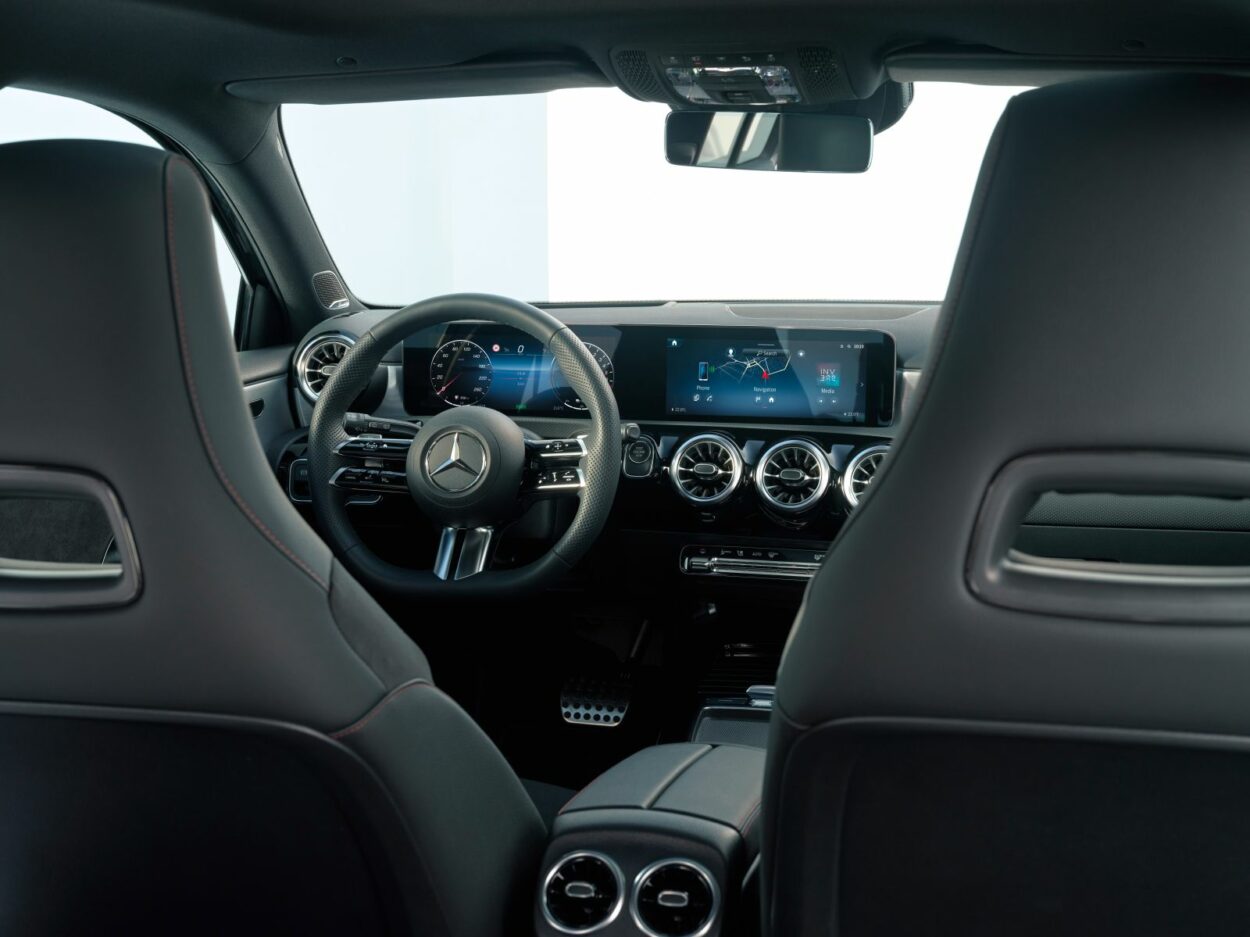
Nuove tecnologie entrano a far parte della dotazione di serie di tutta la gamma Mercedes Classe A. Per esempio la retrocamere, il pacchetto USB e il volante in pelle nappa. Salendo con gli allestimenti troviamo elementi aggiuntivi come i fari a LED, il supporto lombare, il pacchetto parcheggio e il pacchetto specchietti. Per semplificare il processo di personalizzazione, Mercedes ha anche raggruppato caratteristiche funzionali che spesso vengono ordinate insieme.
Il sistema MBUX della Classe A è stato aggiornato e ora è più avanzato che mai. Incorpora un sensore di impronte digitali, una porta USB-C aggiuntiva e miglioramenti all’assistente vocale Hey Mercedes. Anche il pacchetto di assistenza alla guida è stato migliorato.
Tutti i benzina elettrificati
A livello di motorizzazioni, Mercedes ha aggiornato tutti i modelli a benzina della Classe A (ad esclusione delle AMG) con sistemi mild-hybrid a 48 volt che includono un generatore di avviamento a cinghia. Le versioni disponibili saranno il plug-in hybrid 250 e da 218 CV; i benzina 180 da 136 CV, 200 da 163 CV, 220 4Matic da 190 CV, 250 4Matic da 224 CV; i diesel 180 d da 116 CV, 200 d da 150 CV, 220 d da 190 CV.
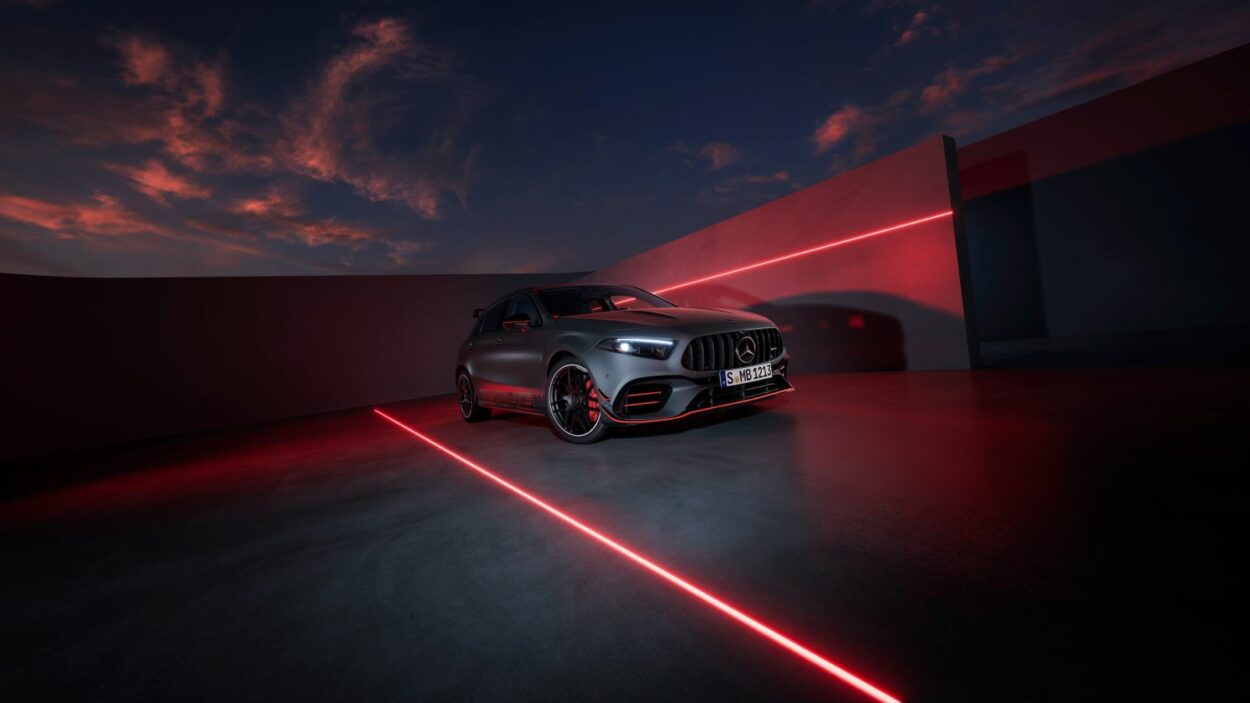
Completano la gamma i modelli Mercedes-AMG A 35 e A 45 S, che beneficiano degli stessi aggiornamenti visivi della Classe A. La A 35 viene dotata anche di un sistema ibrido leggero da 48 volt. La A 45 S invece verrà offerta anche in una variante speciale AMG Street Style Edition con vernice Mountain Grey Magno con accenti arancio fluo, cerchi neri opachi da 19”, pinze freni rosse e alcune modifiche specifiche nell’abitacolo.
Mercedes Classe A – Le foto

